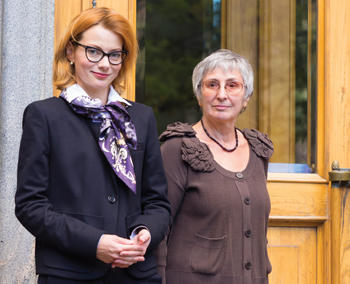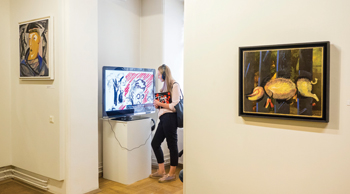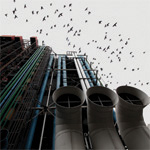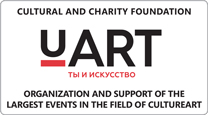Art with an address
The State Russian Museum presents the exhibition “Apartment no. 5”
Text:
Olga Muromtseva
Photo: Ruslan Shamukov
|
The exhibition features about 150 painting and graphics art pieces by some of the «Apartment no. 5» group regulars |
The exhibition entitled “Apartment no. 5: To the
History of the Petrograd
The curators of the project selected works by artists who did not belong to the same artistic currents of the early 20th century, nor did they proclaim the same ideas or manifestoes; yet, they were united by their friendly circle and common taste, which combined the love for classics and the search for new forms. In this circle filled with discussions, creative exchange, poetry readings, music recitals, and displays of their artworks, their art was born, true to ‘reality and absolute form,’ as critic Nikolay Punin put it.
Apartment no. 5 at 17 Universitetskaya Embankment was a
specific address in Petrograd, in the building that housed the Academy of Fine
Arts. It was the official housing of Sergey Isakov,
|
Olga Muromtseva, Director General |
At the ‘core’ of ‘Apartment no. 5’ were Lev Bruni, Petr Miturich, Nikolay Tyrsa, Petr Lvov, Natan Altman, and Nikolay Punin, influenced by Vladimir Tatlin and Velimir Khlebnikov. What brought them together was an interest in form, line, material, and technique. Kazimir Malevich, recently arrived in Petrograd, and his theories of Suprematism seemed extremely rational to that group of artists, as Punin mentioned it. Their own art was different and diverse, influenced by Futurism, and yet attentive and reverent to the classics.
The exhibition presents about 150 paintings and graphic pieces by artists who frequented Apartment no. 5. It is amazing how they could remain loyal to classical and everyday subjects (landscapes, interior scenes, or portrait sketches) in those troubled times. Perhaps this was their artistic remedy that helped to survive and preserve not just their art but their friendship, and the whole circle of literary and artistic Petrograd of the 1920s.
Natalia Kozyreva, head of the Department of Graphics and Watercolour of the State Russian Museum, one of the curators and initiators of the exhibition, remembers how the idea came up: ‘Two desires came together: first, to display the rich collection of graphic pieces of the late 1910s and 1920s from the holdings of the Russian Museum; second, to present the personality of Nikolay Punin, art historican, critic, and writer who was the cementing force for the majority of those artists.’ Apart from works from the Russian Museum, there are loans from the Tretyakov Gallery, Bakhrushin Theatre Museum, Research Museum of the Academy of Fine Arts in St. Petersburg, as well as from private collections and family archives. The exhibition ‘was growing and evolving as an organic piece of art,’ says Natalia Kozyreva, and the preparatory process brought some discoveries, corrected attributions, etc.
|
Irina Karasik, leading research fellow at the Department of Contemporary Art of the State Russian Museum |
Irina Karasik, leading research fellow at the Department of
Contemporary Art of the State Russian Museum, comments on the role of Vladimir
Tatlin in the formation of this community with a metaphor of ‘artists boiling
in Tatlin’s cauldron.’ Tatlin infested them with the interest toward form and
material. This is why artists transitioned from figurative paintings to reliefs
Irina Karasik addresses the potential viewers and names five reasons for visiting the exhibition:
— First, you will see works by outstanding artists, which are great pleasures to look at;
— Second, it is not just an assembly of artists, but an important event, a phenomenon named after the place they frequented;
— Third, the title of ‘Apartment no. 5’ is still largely
unfamiliar to the viewers, and the exhibition unfolds a narrative about
— Fourth, the personality of Nikolay Punin is important, who acted as a leader for that circle of artists, and ‘formatted’ that community as a specific moment in the history of art. It is through his eyes that we look at their art;
— Fifth, the very period when the showcased artists worked (1915–1925) was a time of artistic innovation, when new art flourished and then declined. This is a transitory period, a turning point that is hard to represent, so it was twice as important to convey that atmosphere in the exhibition.
|
The display includes interactive works |
Truly, the main reasons are listed, and yet there is another
one, which makes
Back














